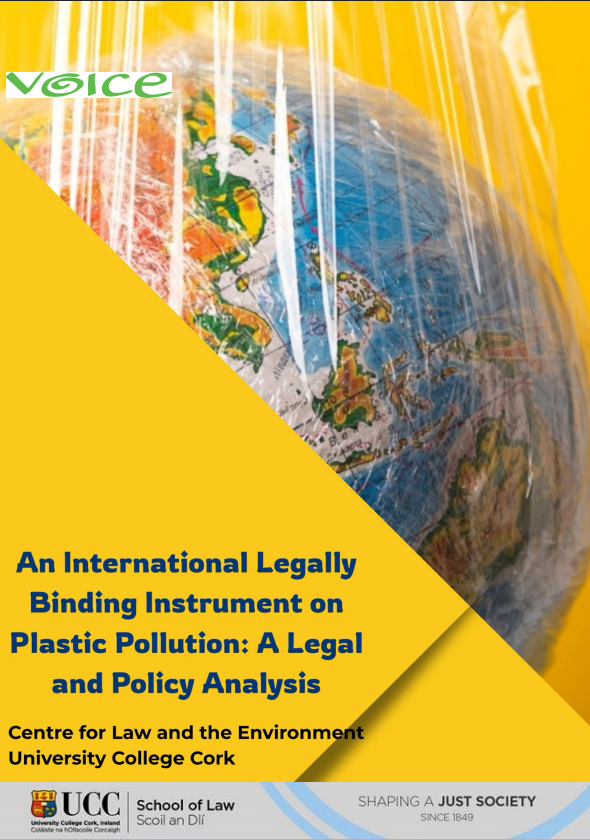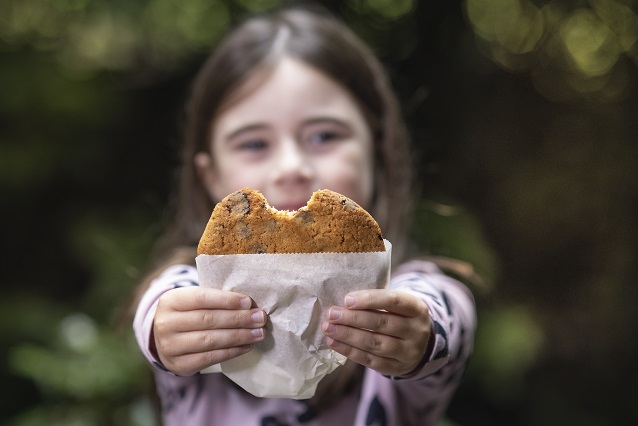Unpacking the Poison: Why the Plastics Treaty Must Regulate Toxic Additives
VOICE's Second Key Demand for INC-5
‘Pay no attention to that man behind the curtain’. Lobbyists and plastics producers want us to focus on recycling, but not to look behind the curtain of production to see what goes in there and see why recycling is never going to be the real solution.
When we talk about plastic pollution, it’s easy to focus on bottles, wrappers, and waste piles. But what often gets missed, or deliberately hidden, is what plastics are made of. Behind the scenes, over 3,000 chemicals are used in plastic production globally, including known toxins like PFAS, phthalates, and heavy metals. These chemicals threaten not only human and environmental health, but also the very viability of reuse, refill, and recycling systems.
As negotiations on the Global Plastics Treaty continue, VOICE is calling on the Irish government to push for strong, enforceable regulation of harmful chemicals in plastics. And we’re not alone, the comprehensive report from Master Student’s at UCC’s Environmental Law Clinic makes it clear; toxic additives is a linchpin issue for making any circular economy functional.
The Problem: Chemicals Are Undermining Circularity
Plastics contain thousands of additives, from flame retardants and stabilisers to water-resistant coatings and dyes. Some of these, like PFAS, have been widely used in food packaging and textiles and are now under review for total phase-out in the EU due to their links to cancer, reproductive harm, and immune system disruption.
But here’s the thing: we often don’t know what chemicals are in our plastics. This makes reuse hazardous, recycling nearly impossible, and proper disposal dangerous, especially in countries with limited infrastructure. For a circular economy to work, we need plastics that are safe by design, not just managed after the fact.
As our report puts it, we must define where the “circle” begins. A truly circular economy starts with non-toxic, reusable, and recyclable materials, not hazardous waste disguised as convenience!

What the Treaty Says, And Where It Falls Short
The treaty negotiations have acknowledged the problem, but action has been limited. Currently, Article 3 (on “Chemicals of Concern”) and Article 5 (on “Product Design”) contain broad language like “encouraging safer alternatives”, but no binding bans, timelines, or thresholds.
Our Plastics Treaty Analysis and Report (see Chapters 5 and 7) identifies this gap and points out that the treaty should:
- Define hazardous additives clearly and in alignment with international chemical conventions.
- Set out timelines for phase-outs of toxic substances.
- Link chemical regulation directly to product design standards under Article 5.
- Incorporate a Right to Know mechanism so that all plastic products come with full transparency on chemical content.
Without these steps, the treaty risks greenwashing the plastic economy, letting toxic materials circulate through our systems under the false banner of “recyclability.”
Human Health and Human Rights: The Overlooked Link
This issue is more than technical, it's deeply personal. Communities living near plastic production or waste sites suffer the worst health impacts. Informal waste workers, often women and children, handle toxic materials without protection. And frontline communities, especially Indigenous peoples and communities in the Global South, are rarely meaningfully included in the treaty process.
Yet, as our report highlights in Chapter 6, the Right to Health is not currently recognised as a binding principle in the treaty. Mentions of rights holders remain vague or symbolic. VOICE believes the treaty must:
- Enshrine the Right to Health in its preamble and operative text.
- Mandate the participation of affected communities in treaty implementation.
- Link chemical regulation directly to health outcomes, making this a matter of justice, not just policy.
Following Proven Models: Lessons from Other Treaties
While the plastics treaty is new, there are existing legal frameworks that offer strong models. The Minamata Convention on Mercury, for example, includes:
- Binding obligations on hazardous chemicals.
- Global thresholds and timelines for phase-out.
- A structure for international cooperation on enforcement.
Our report (see Chapter 7) recommends using similar approaches for the plastics treaty, especially for regulating chemicals of concern. Likewise, aligning with the Stockholm Convention on Persistent Organic Pollutants can ensure coherence across international regimes and strengthen enforcement.
Why Ireland’s Voice Matters
As a member of the High Ambition Coalition, Ireland has committed to a full life-cycle approach to plastics. But to live up to that promise, it must back strong, global regulation of plastic additives. This means:
- Supporting binding commitments to phase out toxic chemicals.
- Demanding transparency in plastic production and trade.
- Linking chemicals to human rights protections and safe product design.
Ireland’s leadership can help ensure the treaty supports not just waste reduction, but health, safety, and justice around the world.
The Bottom Line: Regulation Is a Prerequisite for Circularity
You can’t recycle your way out of a chemical mess. And you can’t build a circular economy on materials that are toxic, secretive, and dangerous. If the Global Plastics Treaty doesn’t regulate the chemicals inside plastics, it will undermine its own goals, and the rights of people everywhere.
Chemical transparency and toxic-free design aren’t side issues — they are the foundation of a safe, sustainable plastic future.
Want to know more?
Read the full ILBI report HERE and stay tuned for our next post in this series, where we’ll look at our third demand; how Ireland must push for binding global restrictions on single-use and short-lived plastics and Ban Problematic Plastics.



